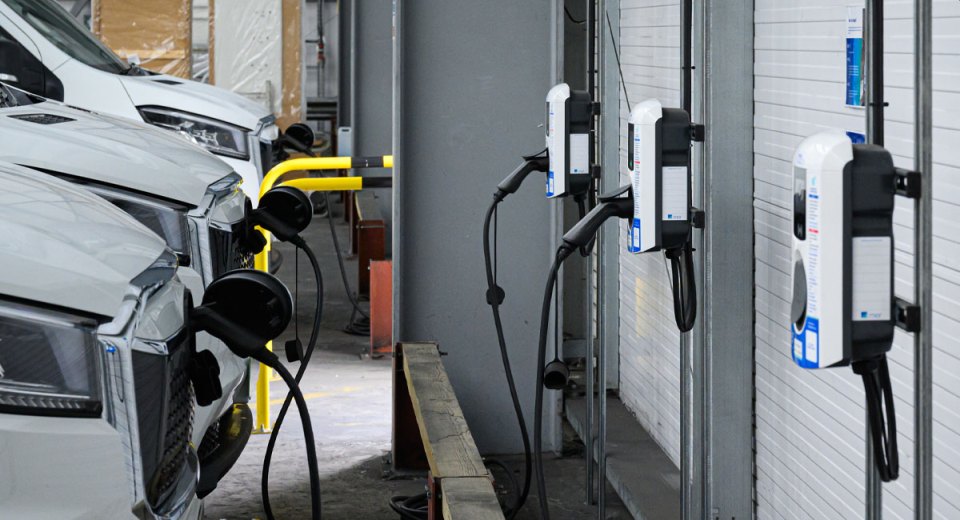
This is an op-ed from Kate Harrison, Co-Founder of MoveEV, an AI-backed EV transition company that helps organizations convert fleet and employee-owned gas vehicles to electric, and reimburse for charging at home.
In a world increasingly concerned about environmental sustainability, many forward-thinking companies have embraced plug-in hybrid electric vehicles (PHEVs) as a means of reducing their carbon footprint. Today, there are more than 860,000 PHEVs on the road contributing to a greener future. However, the real impact of PHEVs can only be realized when drivers consistently plug in their vehicles to use electricity rather than relying on gasoline. Otherwise, these heavier, more resource-intensive vehicles can actually be worse for the environment and cost more to run by hundreds of dollars a year.
The tricky part is that PHEV fleet drivers are not inherently incentivized to “do the right thing” when it comes to refueling ― especially when they get reimbursed for buying gas but not for charging at home. Thus, it is essential for organizations to put policies and programs in place to encourage specific fleet driver behavior. Here are five simple steps they can take to increase PHEV charging and cut fuel costs.
Offer Training and Education
Many drivers may not be fully aware of the benefits of plug-in hybrid vehicles or how much extra it can cost when PHEVs are not plugged in regularly. Offering training and educational resources can help address this issue. Conduct workshops or webinars to educate drivers about the advantages of plug-in driving and how to use the vehicle’s electric mode optimally. Well-informed drivers are more likely to embrace the technology.
Add Charging Infrastructure at Work
One of the most effective ways to encourage PHEV drivers to plug in is by providing charging infrastructure on-site. While not every PHEV fleet driver will return to the office regularly, having a convenient charging station at their workplace makes it easy for them to charge on-site. Dedicated fleet charging spaces provide the added benefit of a visual reminder to employees of recharging expectations. Companies can take advantage of various financial incentives such as tax credits, grants, rebates, and creative financing options to help offset the installation expenses for level 2 or fast chargers.
Facilitate On-the-Go Charging with Mobile Apps and Charging Cards
Simplify the charging process for PHEV fleet drivers by providing mobile apps and charging cards that offer easy access to a network of charging stations beyond the workplace and home. These apps and cards can help drivers locate available charging stations, check real-time availability, and even make payments seamlessly. Ensure that your company covers the costs or reimburses for using these services, making it cost-effective and hassle-free for drivers to recharge their vehicles wherever they travel. The convenience of on-the-go charging options can significantly encourage PHEV drivers to plug in more frequently, even when away from their usual charging spots.
Reimburse for Charging at Home
For most fleet drivers, charging at home will be the most convenient option and, if they can charge off-peak, can be the most economical option for your company. Home charging can save fleets 60% on electricity costs, and nightly charging can ensure that PHEVs are able to use their all-electric mode as much as possible. To get the behavior you want and comply with laws like CA 2802, you need to make sure employees are not covering the costs of your fleet electricity out of pocket, no matter where they charge. Reimbursing for charging at home is a critical step in any successful home-first charging effort.
Implement Incentive Programs
Incentive programs can be highly effective in motivating fleet PHEV drivers to plug in more frequently. These programs can take various forms, including financial incentives, recognition, or rewards. Consider offering bonuses or incentives to drivers who achieve high plug-in rates, maintain a specific electric-only range, or consistently charge their vehicles. Recognizing and rewarding environmentally conscious behavior can be a powerful motivator and have the added benefit of improving employee satisfaction. A program like this can stand alone or be directly tied to your company’s environmental and/or cost-saving targets.
Encouraging fleet drivers to plug in is critical when it comes to realizing the full economic and environmental benefits of a PHEV fleet. By taking a few extra steps, fleet managers can save a lot of extra money and help their company meet its sustainability targets.
About the Author: Kate L. Harrison is the co-founder and Head of Marketing at MoveEV, an AI-backed EV transition company that helps organizations convert fleet and employee-owned gas vehicles to electric, and reimburse for charging at home. With more than a decade of experience as a serial entrepreneur and seasoned marketer, Kate has worked with small businesses, nonprofits, and government organizations to make the world a better place. She is a best-selling author, thought leader, and a frequent speaker at conferences and events, sharing her insights and experiences with others who are working to create a more sustainable future.
- SEO Powered Content & PR Distribution. Get Amplified Today.
- PlatoData.Network Vertical Generative Ai. Empower Yourself. Access Here.
- PlatoAiStream. Web3 Intelligence. Knowledge Amplified. Access Here.
- PlatoESG. Carbon, CleanTech, Energy, Environment, Solar, Waste Management. Access Here.
- PlatoHealth. Biotech and Clinical Trials Intelligence. Access Here.
- Source: https://techstartups.com/2023/10/26/how-to-boost-greater-plug-in-hybrid-phev-fleet-driver-engagement-5-strategies-for-companies/
- :has
- :is
- :not
- :where
- 000
- a
- Able
- About
- access
- Achieve
- actually
- added
- address
- ADvantage
- advantages
- all-electric
- alone
- an
- and
- any
- apps
- ARE
- AS
- At
- author
- availability
- available
- aware
- away
- BE
- behavior
- benefit
- benefits
- Better
- Beyond
- bonuses
- boost
- businesses
- but
- Buying
- by
- CA
- CAN
- carbon
- carbon footprint
- Cards
- charge
- charging
- charging stations
- check
- Co-founder
- comes
- Companies
- company
- Company’s
- comply
- concerned
- Conduct
- conferences
- conscious
- Consider
- consistently
- contributing
- convenience
- Convenient
- convert
- Cost
- cost-effective
- Costs
- covering
- covers
- create
- Creative
- Credits
- critical
- Cut
- decade
- dedicated
- directly
- dollars
- driver
- drivers
- driving
- easy
- Economic
- educate
- educational
- Effective
- effort
- Electric
- electric vehicles
- electricity
- embrace
- embraced
- Employee
- employees
- encourage
- engagement
- ensure
- Entrepreneur
- Environment
- environmental
- Environmental Sustainability
- environmentally
- especially
- essential
- EV
- Even
- events
- Every
- expectations
- expenses
- experience
- Experiences
- extra
- FAST
- few
- financial
- financing
- five
- FLEET
- Footprint
- For
- forms
- forward-thinking
- frequent
- frequently
- from
- Fuel
- full
- fully
- future
- GAS
- gasoline
- get
- Government
- grants
- greater
- greener
- Have
- having
- head
- help
- helps
- her
- here
- High
- highly
- Home
- How
- How To
- However
- http
- HTTPS
- Hundreds
- Hybrid
- if
- Impact
- implement
- in
- Incentive
- Incentives
- incentivized
- Including
- Increase
- increasingly
- Infrastructure
- inherently
- insights
- installation
- issue
- IT
- ITS
- jpg
- Laws
- leader
- Level
- like
- likely
- Lot
- maintain
- make
- MAKES
- Making
- Managers
- many
- Marketing
- Matter
- May..
- means
- Meet
- Mobile
- mobile-apps
- Mode
- money
- more
- most
- much
- Need
- network
- no
- nonprofits
- of
- offer
- offering
- Office
- offset
- on
- only
- Op-ed
- Option
- Options
- or
- organizations
- Others
- otherwise
- out
- part
- payments
- Place
- plato
- Plato Data Intelligence
- PlatoData
- plug
- Plugged
- policies
- possible
- powerful
- process
- Program
- Programs
- provide
- providing
- put
- range
- Rates
- rather
- real
- real-time
- realized
- realizing
- rebates
- Recharge
- recognition
- recognizing
- reducing
- Refueling
- regularly
- relying
- reminder
- resource-intensive
- Resources
- return
- rewarding
- Rewards
- right
- Run
- Save
- seamlessly
- seasoned
- serial
- serial entrepreneur
- Services
- sharing
- she
- significantly
- Simple
- small
- small businesses
- spaces
- Speaker
- specific
- spots
- stand
- station
- Stations
- Step
- Steps
- strategies
- successful
- such
- sure
- Sustainability
- sustainable
- sustainable future
- Take
- taking
- targets
- tax
- Technology
- than
- that
- The
- the world
- their
- Them
- There.
- These
- they
- this
- thought
- Thus
- Tied
- to
- today
- Training
- transition
- travel
- use
- using
- usual
- various
- Vehicles
- want
- ways
- Webinars
- when
- while
- WHO
- will
- with
- worked
- working
- Workplace
- Workshops
- world
- worse
- year
- you
- Your
- zephyrnet












